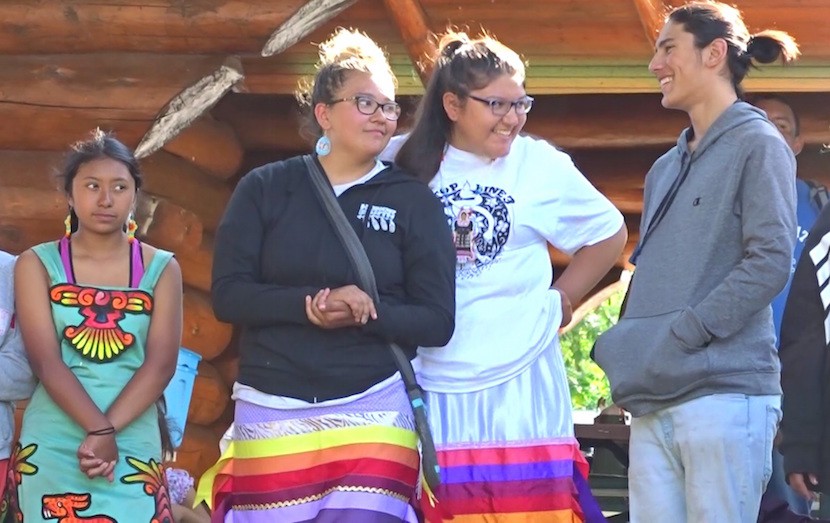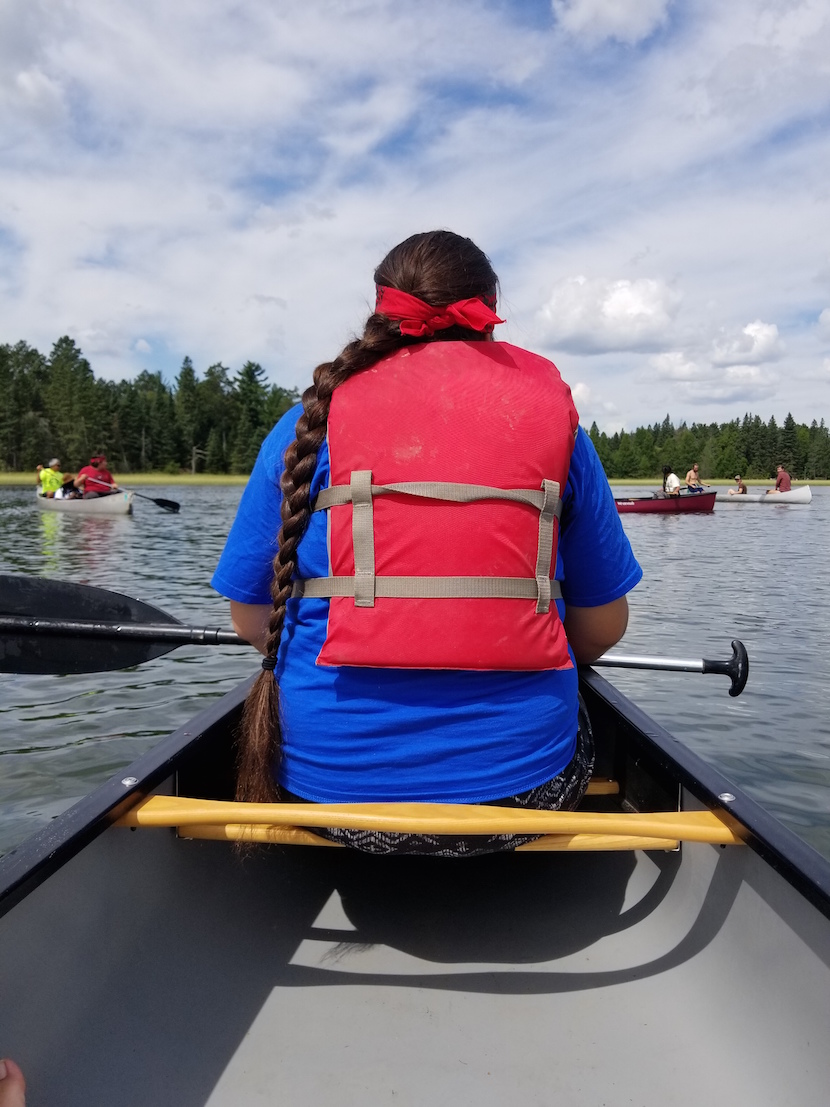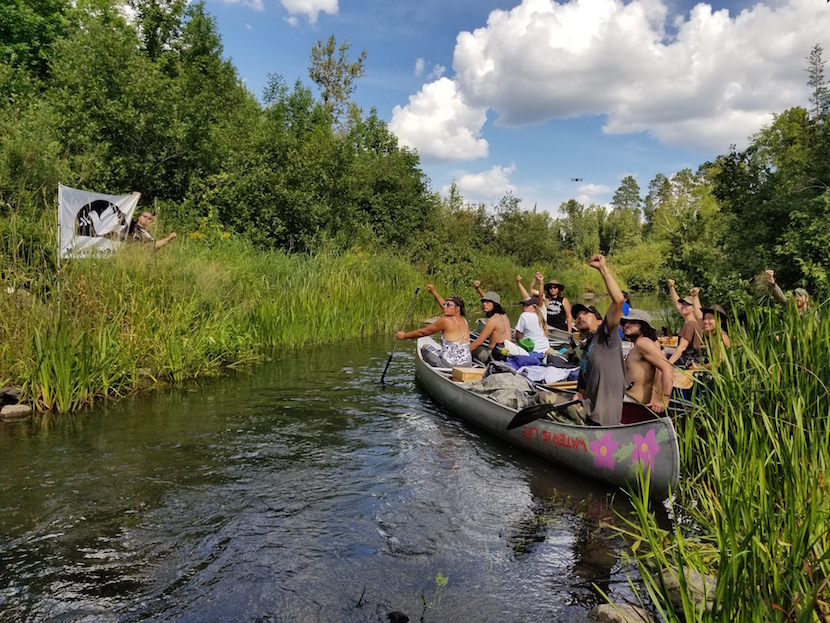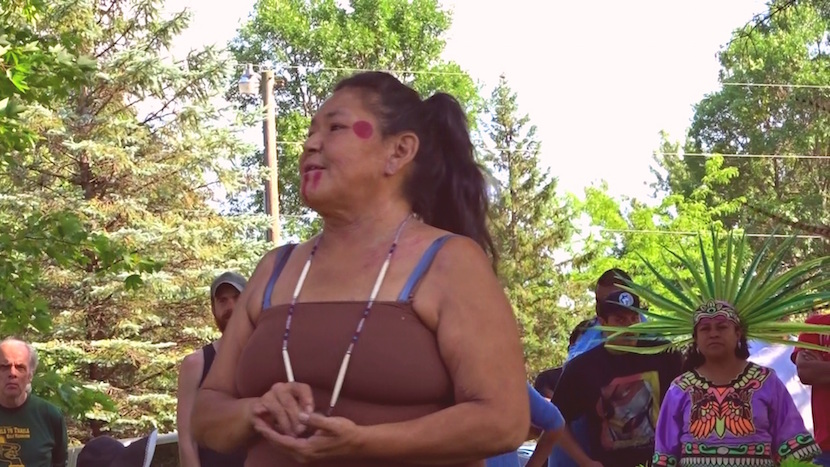
By Li Boyd Mille Lacs Band Member
In a month of multiple significant developments in the pipeline controversy, the most important story again lies with our indigenous youth. In early July, thirteen young Minnesotans were granted full status as a formal intervening party in the Public Utility Commission’s Line 3 Approval process after demonstrat- ing to a judge that no one else could adequately represent them. In their words, “we’re the most qualified to articulate and defend our rights, and describe Enbridge’s infringement upon them.”
On Aug. 12, the indigenous contingent of these courageous young people embarked on a 250-mile canoe trip from the head- waters of the Mississippi, where the proposed Line 3 corridor will first cross the water, to Big Sandy Lake and the site of another proposed crossing. They were joined by additional indigenous youth and supporters who traveled from Canada and various places in the United States to take part. The river near the headwaters was low, making for difficult paddling conditions in the first few days, but by the time of the closing ceremony at Sandy Lake Recreation Area on Sept. 2, the water was so high that the Army Corps of Engineers had to increase the output of Libby Dam.
The paddlers were assisted along the way, especially in East Lake territory, by Harvey and Morningstar Goodsky of the Mille Lacs Band. At the Sept. 2 closing ceremony, East Lake Mille Lacs Band member Tania Aubid offered a prayer for our young water protectors. The youth then spoke. Nina Berglund, a Lakota participant recently graduated from high school, said, “This isn’t just something that we’re saying because it sounds cool to everyone else. This is something that we know. Line 3 is just one thing they’re doing, but it’s a part of many different projects, many different proposals that they’re bringing up to our people, that we’re not even being consulted about. We need to let them know that we’re sick of just letting them put that through, we’re done. We’re not letting this happen no more. We’re not afraid to speak up.”
Other activism in the state of Minnesota also gained media attention as the Fond du Lac resistance camps began to engage in nonviolent direct actions (NVDA) against the 13-mile segment of Line 3 currently under construction in Wisconsin. Construction in Wisconsin and Canada has already been approved, so Line 3 is being built right to Minnesota’s borders in anticipation of the line’s approval here. Direct action organizers have remained dedicated to NVDA tactics that involve no destruction of property or violent confrontation, though there was a single incident of equipment damage by a group not affiliated with the action
organizers. These actions have stalled work on the line several times and resulted in multiple arrests, creating the need for legal funding in support of the water protectors. It has also increased attention to the camps and made them a target for harassment. Water protectors have reported several incidents of attempted sabotage, and both camps in Cloquet have recently been put on notice by Saint Louis County that, though they’re on private land, they do not have permits for camping. The frontline camp, called Camp Makwa, has tripled in size in the past week. The camp is open and has NVDA training available on an ongoing basis.
The most surprising development this past month was the Sept. 11 release of testimony from the Department of Commerce which urged the denial of the Certificate of Need for the Line 3 project. Citing several issues with the project as proposed, including a basic lack of need for the capacity to transport more oil, the DOC testimony not only recommended against construction of a new line but stated that all exposed segments of the old line should be removed.
This came as a validation to Line 3 opponents but does not signify the end of the battle with Enbridge. While the testimony confirms much of what water protectors have been saying all along, the Minnesota Department of Commerce lacks the regulatory authority to block the approval of the project, and many of the recommendations outlined can only be enforced at the federal level. Federal pipeline regulation is profoundly underdeveloped, and denial of the project still lies solely at the discretion of the Minnesota Public Utilities Commission. Furthermore, the in-depth nature of the 300-page testimony has given Enbridge the opportunity to fix many of the things that may have been found objectionable in their proposal.
Moving forward, public comment hearings for the Final Environmental Impact Statement begin on Sept. 26 in Thief River Falls. The PUC is sticking to its accelerated 280-day approval schedule, even though there’s no regulation that mandates this timeframe for an EIS proceeding. Some, like Winona LaDuke, feel that the state is rushing a delicate process that deserves much more research, transparency and examination.
Due to the rush, the FEIS comments are due by Oct. 2 with public hearings in only nine locations around the state. The FEIS comment period is meant to focus on legal discrepancies within the document, but the inadequacy of the responses to the first round of comments can be argued to be enough legal justification to warrant further comment.
The certificate of need and route proceedings are also underway with intervening parties, including the Mille Lacs Band and the youth intervenors, preparing to call expert witnesses to testify before an administrative law judge. While the filing date for expert witness testimony has passed, there’s still an opportunity to make rebuttal or surrebuttal testimony in response to testimony filed by Enbridge or other parties in the case. Additionally, the certificate of need proceedings are subject to a public comment period much like the EIS process. These comments are due Nov. 22.
As the reality of the pipeline looms and grows closer, so too does the process of fighting it become more complicated and difficult. However, there are resources in many places to get further information, such as stopline3.org, honorearth.org, and even mn.gov. Follow Honor the Earth’s Facebook page for quick daily updates as well.
Photos:
Atquetzali Quiroz, Rose Whipple, Nina Berglund, and Cherokee Senevisai were among the youth who paddled 250 miles to Big Sandy Lake in protest of the proposed Line 3 pipeline.
Tania Aubid spoke at the closing ceremony at Big Sandy Lake.



